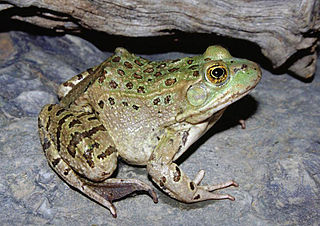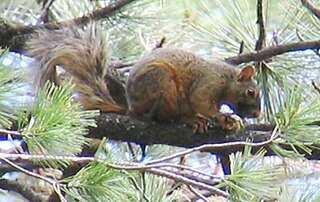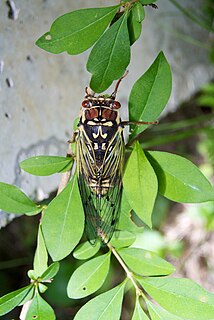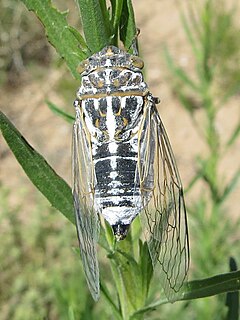Related Research Articles

Chiricahua is one of the socio-culturally related Native American tribes in the Southwestern United States, which include the Tsokanende (Chiricahua), Ndendahe, Tchihende (Mimbreño), Sehende (Mescalero), Lipan, Salinero, Plains and Western Apache. Native Americans, based in the Southern Plains and Southwest United States. Culturally related to other Apache peoples, Chiricahua historically shared a common area, language, customs, and intertwined family relations. At the time of European contact, they had a territory of 15 million acres (61,000 km2) in Southwestern New Mexico and Southeastern Arizona in the United States and in Northern Sonora and Chihuahua in Mexico.
The Apache are a group of culturally related Native American tribes in the Southwestern United States, which include the Chiricahua, Jicarilla, Lipan, Mescalero, Mimbreño, Ndendahe, Salinero, Plains and Western Apache. Distant cousins of the Apache are the Navajo, with which they share the Southern Athabaskan languages. There are Apache communities in Oklahoma, Texas, and reservations in Arizona and New Mexico. Apache people have moved throughout the United States and elsewhere, including urban centers. The Apache Nations are politically autonomous, speak several different languages and have distinct cultures.

The Chiricahua Mountains massif is a large mountain range in southeastern Arizona which is part of the Basin and Range province of the west and southwestern United States and northwest Mexico; the range is part of the Coronado National Forest. The highest point, Chiricahua Peak, rises 9,759 feet (2,975 m) above sea level, approximately 6,000 feet (1,800 m) above the surrounding valleys. The range takes its name from the Chiricahua Apaches native to the region.

Chiricahua National Monument is a unit of the National Park System located in the Chiricahua Mountains of southeastern Arizona. The monument was established on April 18, 1924, to protect its extensive hoodoos and balancing rocks. The Faraway Ranch, which was owned at one time by Swedish immigrants Neil and Emma Erickson, is also preserved within the monument.
Chiricahua is a Southern Athabaskan language spoken by the Chiricahua people in Oklahoma and New Mexico. It is related to Navajo and Western Apache and has been described in great detail by the anthropological linguist Harry Hoijer (1904–1976), especially in Hoijer & Opler (1938) and Hoijer (1946). Hoijer & Opler's Chiricahua and Mescalero Apache Texts, including a grammatical sketch and traditional religious and secular stories, has been converted into an online "book" available from the University of Virginia.

Cicadas of the genus Neotibicen are large-bodied insects of the family Cicadidae that appear in summer or early fall in eastern North America. Common names include cicada, harvestfly, jar fly, and the misnomer locust. Until recently, these species were all in the genus Tibicen, which was redefined in the twenty-first century to include only a few European species, while species from the Western United States and Mexico are now placed in a separate genus, Hadoa. In addition, several former Neotibicen species have been moved to the genus Megatibicen.

The Vegas Valley leopard frog is a species of frog previously declared extinct. Once it occurred in the Las Vegas Valley, as well as Tule Springs, Clark County, southern Nevada, United States of America, at elevations between 370 and 760 m. It was believed to be the only frog endemic to the United States to have become extinct in modern times.

Chiricahua Peak is the name of a 9,763 feet (2,976 m) peak located in the Chiricahua Mountains of southeastern Arizona, located about 35 miles (56 km) north of the United States–Mexico border. It is the highest summit in the Chiricahua Mountains and the highest point in Cochise County.

The Chiricahua leopard frog is a species of frog in the family Ranidae, the true frogs. It is native to Mexico and the United States. Its natural habitats are temperate forests, rivers, intermittent rivers, swamps, freshwater lakes, intermittent freshwater lakes, freshwater marshes, intermittent freshwater marshes, freshwater springs, ponds, and open excavations. It is threatened by habitat loss and chytrid fungus to such an extent that it has been eliminated from 80% of its former habitat. The Phoenix Zoo, Arizona's Department of Game and Fish, and the USFWS are trying to mitigate threats through captive breeding and reintroduction efforts.

The Mexican fox squirrel(Sciurus nayaritensis) is a species of tree squirrel found throughout the Sierra Madre Occidental of Mexico as far south as Jalisco — and northward into the Chiricahua Mountains of southeastern Arizona, U.S.

Chiricahua National Forest was established as the Chiricahua Forest Reserve in Cochise County, Arizona by the General Land Office on July 1, 1902 with 169,600 acres (686 km2). After the transfer of federal forests to the U.S. Forest Service in 1905, it became a National Forest on March 4, 1907. On July 1, 1908 it absorbed Peloncillo National Forest, including lands in Hidalgo County, New Mexico. On July 1, 1917 Chiricahua was absorbed by Coronado National Forest and the name was discontinued.
The Fort Sill Apache Tribe is the federally recognized Native American tribe of Chiricahua Warm Springs Apache in Oklahoma.

Cryptotympanini is a tribe of cicadas in the family Cicadidae. There are 16 genera and at least 260 described species in Cryptotympanini. They are found in the Nearctic, Palearctic, Indomalaya, Oceania, and tropical Africa.

Southern Athabaskan is a subfamily of Athabaskan languages spoken primarily in the Southwestern United States with two outliers in Oklahoma and Texas. The language is spoken to a much lesser degree in the northern Mexican states of Sonora, Chihuahua, Durango, Coahuila, and Nuevo León. Those languages are spoken by various groups of Apache and Navajo peoples. Elsewhere, Athabaskan is spoken by many indigenous groups of peoples in Alaska, Canada, Oregon and northern California.

Bonita Canyon is a box canyon on the western slope of the Chiricahua Mountains in southeastern Arizona, which lies at 5,360 feet (1,630 m) in elevation and opens in a southwesterly direction into the Sulphur Springs Valley.

The genus Hadoa comprises large-bodied Cicadidae occurring in Western North America. Until recently, these species were in the genus Tibicen, which has now been redefined so as to include only a few European species, while species from the Eastern US are now placed in Neotibicen and Megatibicen.
Hadoa chisosensis is a species of annual cicada in the genus Hadoa. It is native to the U.S. state of Texas.
Hadoa longiopercula is a species of annual cicada in the genus Hadoa. It is native to the U.S. state of Arizona, found in southeastern Arizona typically in desert scrub.
Chiricahua multidentata is a species of geometrid moth in the family Geometridae. It is found in Central America and North America.
Chiricahua is a genus of geometrid moths in the family Geometridae. There are at least two described species in Chiricahua.
References
- ↑ "Species Hadoa chiricahua". bugguide.net.
| | This Cicadidae article is a stub. You can help Wikipedia by expanding it. |